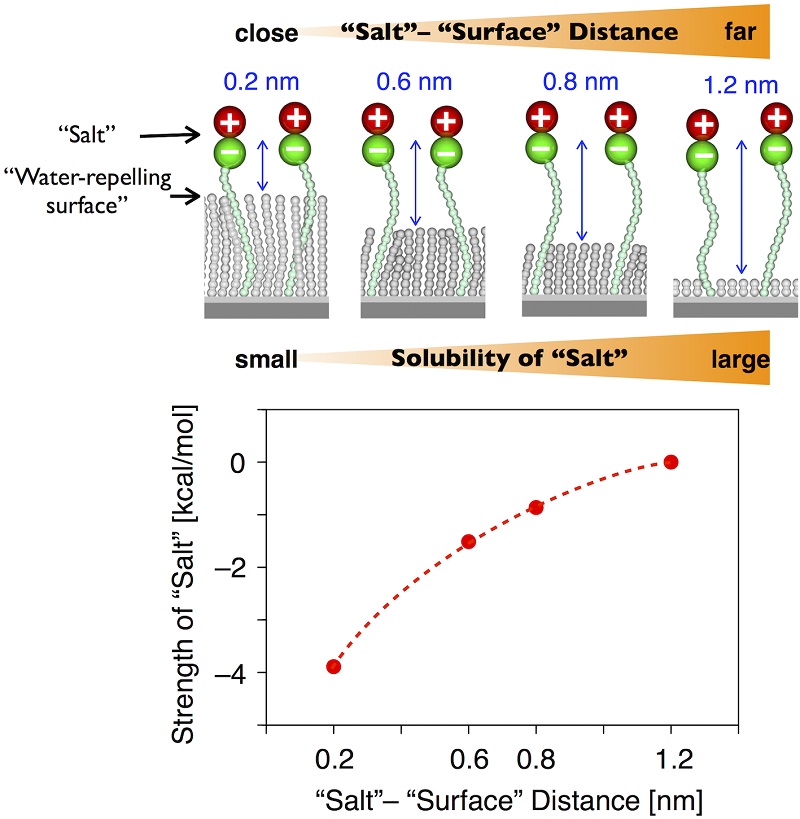Water near a water-repelling surface cannot dissolve salts A step toward antipollution surfaces


Salt and a water-repelling surface
Water near a water-repelling surface is less likely to dissolve salts.
© 2015 Yoshimitsu Itoh, Takuzo Aida.
Researchers at the University of Tokyo have demonstrated that water near a water-repelling surface has significantly less capability to dissolve salts.
Surface pollution is a problem that is found everywhere, such as on dirty clothes in everyday life and shellfish on a ship’s bottom. Since the initial step of pollution starts from adhesion of a pollutant onto a surface, designing antipollution surfaces require an in-depth understanding of surface adhesion at the nanoscale. However, scientific understanding of surface adhesion is still very limited.
The research group of Dr. Yoshimitsu Itoh and Dr. Takuzo Aida at the University of Tokyo, Graduate School of Engineering, Department of Chemistry and Biotechnology discovered that water near a water-repelling surface has significantly less capability to dissolve salts. They utilized a plate where they could place a salt at a defined distance from a water-repelling surface and measured the solubility of salt in water. They found is that when the distance from the water-repelling surface decreases, the salt becomes less soluble. This phenomenon is pronounced at distances of less than one nanometer. One nanometer is the distance at which a substance sticks to a surface.
“Water near a water-repelling surface is less able to dissolve salts.” This unique understanding will force a revision of the common sense regarding salt dissolution. This will pave the way not only for designing novel antipollution surfaces, but also for designing drugs, which also requires a precise understanding of interactions between water-attracting and water-repelling parts of molecules.
Paper
, "Subnanoscale hydrophobic modulation of salt bridges in aqueous media", Science 348, 2015: 555–559, doi: 10.1126/science.aaa7532.
Article link (Publication)
Links
Graduate School of Engineering
Department of Chemistry and Biotechnology, Graduate School of Engineering
Aida Group, Department of Chemistry and Biotechnology, Graduate School of Engineering






